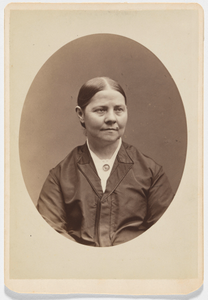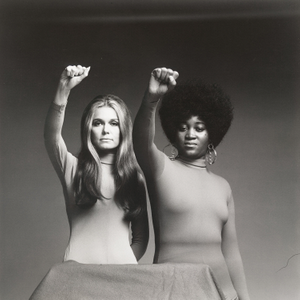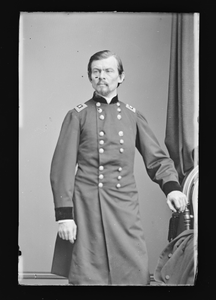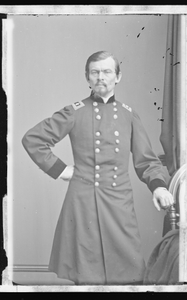Description
Lucy Stone was already a devout abolitionist when she graduated from Oberlin in 1847, but the next year, she was riveted upon seeing Hiram Powers’s statue The Greek Slave in Boston. She became more focused on women’s rights, defending herself from critics by stating, “I was a woman before I was an abolitionist.”Stone helped found the American Equal Rights Association in 1866, but the Fifteenth Amendment divided the suffrage movement in two factions in 1870. Suffragists were keenly aware that the voting rights extended only to male citizens placed women in a more precarious position. Competing suffrage priorities—who should get the vote first, African American men or, separately, white women—splitthe movement. Stone became the leader of the American Woman Suffrage Association, which was dedicated to achieving woman suffrage, especially through state-level legislation. At the same time, it supported African American civil rights.Sumner Bradley Heald (1835–1918)Albumen silver print, c. 1866National Portrait Gallery, Smithsonian InstitutionLucy Stone ya era abolicionista ferviente cuando se graduó de Oberlin en 1847, pero al año siguiente quedó cautivada en Boston por la estatua de Hiram Powers, La esclava griega. Desde entonces se dedicó más a los derechos de la mujer, refutando a quienes la criticaban: “Antes que abolicionista, fui mujer”.Stone participó en la fundación de la Asociación Americana Pro Igualdad de Derechos en 1866, pero en 1870 la Enmienda XV dividió el movimiento sufragista en dos facciones. Las sufragistas sabían bien que la extensión del voto solo a los ciudadanos varones dejaba a las mujeres en mayor...
Image
Albumen Silver Print
National Portrait Gallery, Smithsonian Institution
Record Contributed By
National Portrait GalleryRecord Harvested From
Smithsonian InstitutionKeywords
- Abolitionist
- Abolitionists
- Communications
- Design
- Editor
- Editors
- Education
- Educator
- Educators
- Female
- George Kendall Warren Studio
- Heald, Sumner Bradley
- Interior
- Interior Decoration
- Journalism
- Journalist
- Lucy Stone
- Magazine
- Periodicals
- Portrait
- Portraits
- Reformer
- Reformers
- Society And Social Change
- Stone, Lucy
- Suffragist
- Teacher
- Women





















